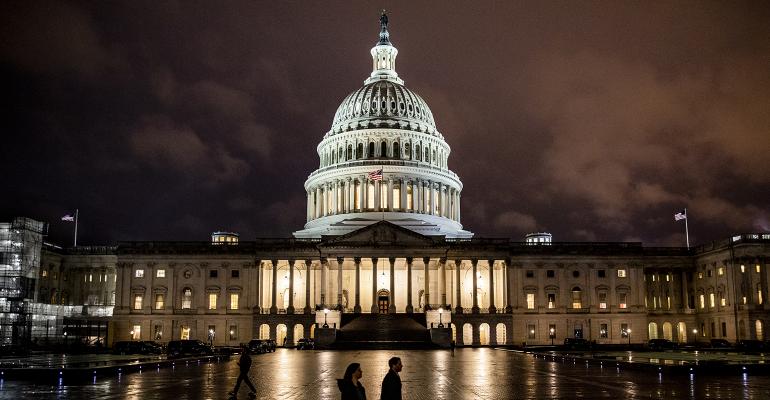The Setting Every Community Up for Retirement Enhancement (SECURE Act), was officially enacted on January 1, 2020 and is generally considered the largest retirement reform to impact the economy since the Pension Protection Act of 2006. The bill itself is the product of a bipartisan effort to make retirement savings more accessible for less-advantaged people.
Considering the significance of the Act, there are a wide array of tax provisions that may impact you and your business. The Act had two main initiatives. The first was aimed at businesses/employers to entice companies to start new retirement plans or make updates to existing plans in order to attract more participation from employees. The second initiative was focused on individuals. The Act modifies some rules surrounding retirement to simplify how distributions are made and provides opportunities for tax benefits beyond what had previously been in place.
The objective of the first goal was to provide incentives to employers who took steps to increase participation in retirement plans by younger employees as well as less-advantaged employees. By doing this, more Boomer-aged people could have another source of retirement funds to use and younger generations could take advantage of their longer horizon before retirement to build a nest egg. The SECURE Act went about this in the following ways:
- Extended deadline for adopting new plans: Previous deadlines to adopt new plans was the company’s year-end. Now companies have up to the due date of their return, including extensions to adopt a plan and make employer contributions. Salary deferrals from employees could start on the date of adoption.
- Pooled employer plans: The act allows for unrelated employers to group together to offer retirement plans across businesses. This is especially relevant for smaller businesses looking to retain talent with more competitive benefit plans.
- New tax credit: Eligible small employers that implement a qualified retirement plan can be eligible for an enhanced tax credit of up to $5,000 that can be claimed for up to three years. Previously the credit was up to $500 for one year.
- New and Enhanced tax credit: An existing plan can be eligible for a new $500 tax credit for adopting an automatic enrollment feature for their plan (the $500 tax credit can be claimed for up to three years). Auto enroll features have been shown to increase participation by employees dramatically in some cases.
- Long-term part-time worker participation: Employees working at least 500 hours for three consecutive years will now be allowed to participate in their employer 401(k) plan. Employers were previously allowed to exclude anyone who worked less than 1,000 hours per year. This affected many less-advantaged workers, and women in many cases, by excluding them from being eligible to build retirement assets.
The second initiative of the SECURE Act was to provide benefits to retirement plan participants and IRA holders. The objective here was to delay required minimum distributions (RMDs), eliminate a confusing “half-year” determination, and allow for tax-deductible IRA contributions beyond the age of 70½. The Act accomplished this by:
- Increasing the age for (RMDs): The previous age limit for required minimum distributions was 70½ years. The SECURE Act increases this age to 72. The “half-year” rule caused a lot of confusion to individuals and financial advisors alike. The delay in RMDs will help to preserve retirement assets for a longer period of time. People are living longer so their retirement funds must match the need to be available over more years.
- Provide birth and adoption benefits: Distributions from retirement accounts are always taxable, and in many cases are subject to an early withdrawal penalty of 10%. The SECURE Act provides an exception to the 10% penalty (for qualified retirement plans and IRAs) for distributions used to cover the costs (up to $5,000) of having or adopting a child.
- Longer IRA contribution limits: The SECURE Act repeals the age limit for those with earned income to continue to contribute to their IRA. The previous limit was 70½. With individuals working later in life, they now have the benefit of getting additional tax deductions for their IRA contributions.
These initiatives put in place by the SECURE Act provide reasons for small businesses to reconsider establishing a retirement plan. They can defer the cost of setting up a plan for their employees, attract and retain talent at their company, and allow their employees to accumulate assets for their retirement.
As with most Congressional action, these benefits must be paid for. In passing the SECURE Act, the government made provisions to recoup the lost revenues by the following:
- The failure to file penalty: Increased to the lesser of $400 or 100% of tax due.
- The failure to file penalty for retirement plan returns (Form 5500) increased: Increased to $105 per day, not to exceed $50,000.
- Elimination of the stretch IRA: Non-spouse beneficiaries will be required to take complete withdrawal of the account balance by the end of the 10th calendar year following the year of the owner’s death. The elimination of stretch IRA can create new complexities in existing estate planning.
Considering its significance, it is important that retirement planning strategies take into account the new provisions of the SECURE Act. While there are many new positive attributes, a comprehensive retirement planning strategy will also consider the potential for new penalties and timelines. The stretch IRA has long been a generational estate planning tool and the elimination of its use going forward will require new thinking in how best to pass assets to heirs.
Matthew Munn is a principal at UHY Advisors and has over two decades of experience in public accounting. He is a member of the Tax Department and leader of the Retirement Plan and Employee Benefits Services Group. He works with clients in designing and establishing retirement plans that maximize tax-deferred growth and accumulate wealth.





